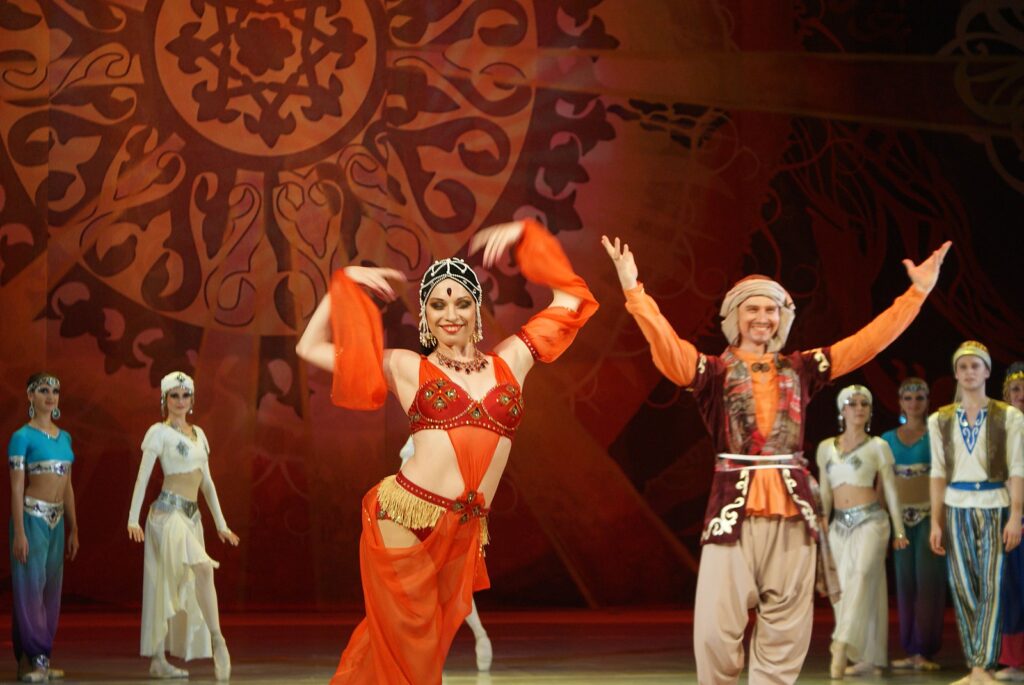The Art of Arab Storytelling: From Folk Tales to Contemporary Literature

By: Rania Basria | Arab America Contributing Writer
Arabic storytelling is a rich and varied tradition that has evolved over centuries to reflect the Arab world’s many cultures, history, and experiences. From the interesting folk tales of “One Thousand and One Nights” to the deep modern works of novelists and poets, Arabic literature provides a wealth of artistic expression and cultural understanding. This article, written by Arab America Contributing Writer Rania Basria, examines the growth of Arabic storytelling, from old oral traditions to modern literary forms.
Arabic storytelling dates back to old oral traditions, in which stories were passed down from generation to generation by spoken word. This oral tradition was an important element of community life, providing both educational and recreational reasons. Storytellers, or “hakawatis,” were venerated individuals in Arab society, frequently appearing in markets, coffeehouses, and courts. They told stories of adventure, morality, and courage, engrossing their listeners with rich details and dramatic flair.
One of the most well-known collections of folk stories from this era is “One Thousand and One Nights,” often known as “The Arabian Nights.” This collection of stories, which includes well-known tales such as “Aladdin and the Magic Lamp” and “Ali Baba and the Forty Thieves,” demonstrates the depth of the Arab oral culture. The narrative structure of “One Thousand and One Nights,” in which the brilliant Scheherazade spins stories to postpone her execution, demonstrates the power of storytelling as a tool of survival and resistance.
With the rise of Islam in the seventh century, Arabic storytelling began to combine religious themes and moral precepts. The Quran, often regarded as the masterpiece of Arabic literature, inspired a wide range of lyrical and narrative styles. During the Islamic Golden Age (8th to 14th centuries), the tradition of “adab,” which included literature, culture, and etiquette, thrived. Scholars and authors such as Al-Jahiz, Ibn Tufail, and Al-Ma’arri made important contributions to Arabic prose and poetry, combining philosophical, scientific, and literary subjects.
During this time, the genre of “maqamat” (assembly) evolved, distinguished by a combination of prose and poetry and a focus on the exploits of a rogue protagonist. The maqamat of Al-Hariri and Badi’ al-Zaman al-Hamadhani are famous examples, demonstrating the grammatical agility and humor that became characteristics of Arabic literature.
The 19th and early 20th centuries saw enormous changes in the Arab world, including the effect of European colonialism and the growth of nationalist movements. These developments were echoed in Arabic writing, which began to address current social and political themes. Writers began experimenting with new literary forms and genres, combining parts of realism and modernism.
Naguib Mahfouz, an Egyptian author who received the Nobel Prize for writing in 1988, was a pioneer of contemporary Arabic writing. His writings, such as “The Cairo Trilogy,” show the intricacies of Egyptian culture and human difficulties in the face of historical change. Mahfouz’s works are praised for their realistic characterizations and perceptive social criticism, which bridge the gap between traditional narrative and modern challenges.
Arabic literature has evolved over the last several decades, reflecting the Arab world’s different experiences and viewpoints. Identity, migration, gender, and political repression are among the issues explored by contemporary Arabic writers. They frequently experiment with storytelling approaches, combining realism with magical realism and interweaving personal and collective experiences.
In modern Arabic literature, famous figures include Lebanese author Hanan al-Shaykh and Palestinian writer Sahar Khalifeh. Al-Shaykh’s works, including “The Story of Zahra” and “Women of Sand and Myrrh,” examine the lives of women in patriarchal civilizations, questioning traditional gender norms and emphasizing the complexity of female identity. Khalifeh’s writings, notably “Wild Thorns” and “The Inheritance,” represent the Palestinian experience by documenting her characters’ challenges and fortitude in the face of political turmoil.
Arabic poetry has also had a rebirth in recent years, with poets such as Adonis (Ali Ahmad Said Esber) and Mahmoud Darwish receiving international renown. Adonis, noted for his inventive use of language and structure, has transformed Arabic poetry, whereas Darwish’s expressive rhymes convey the Palestinian people’s agony and optimism. Their writings continue to inspire and influence subsequent generations of poets and writers.
The translation of Arabic literature into other languages has been instrumental in exposing the Arabic narrative to a wider audience. Translators such as Denys Johnson-Davies, who translated the works of Naguib Mahfouz and other well-known Arabic writers, have contributed significantly to the cross-cultural interchange of literary ideas. This has increased the prominence of Arabic writing while also enriching global literary traditions.
Globalization has extended the reach of the Arabic narrative, allowing modern writers to connect with a larger audience and participate in worldwide literary discussions. Online platforms, literary festivals, and translation projects have expanded the opportunity for Arabic authors to publish their work and interact with readers all over the world.
The art of Arabic storytelling is a dynamic and growing tradition that represents the Arab world’s diverse cultural history. Arabic storytelling has captivated and inspired people throughout history, from ancient oral stories to complex narratives in current writing. It is an effective tool for investigating human experiences, questioning societal conventions, and promoting cross-cultural understanding. As Arabic literature evolves and adapts, it remains an important and powerful force in the worldwide literary scene.
Check out our Blog here!








